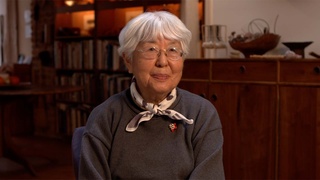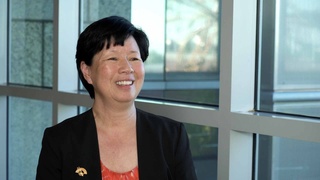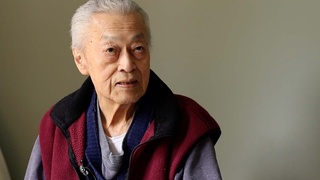Interviews
Developing Art Skills in Camp
She gave me a job which I had to drive teachers who taught at the elementary level school which was located halfway up the hill where the camp was situated. For lunch I’d drive, pick up the teacher, bring them down, and drive them back, et cetera. In the meantime, I hung around the office and I guess I did a certain amount of sketching for personal amusement and she thought it was a nice thing for me to be doing and she was kind enough to take me into the storehouse for school supplies and showed me the section where all the art supplies were and just help yourself to whatever you want. So that’s what I spent an awful lot of time doing, just doing that plus doing this job of driving teachers up and down the hill.
Date: August 6, 1998
Location: California, US
Interviewer: Janice Tanaka
Contributed by: Watase Media Arts Center, Japanese American National Museum
Explore More Videos

The lack of discussion about family’s incarceration in Amache
Sansei judge for the Superior Court of Los Angeles County in California





Passing Time in the Camps with Baton Twirling
(b. 1932) Nisei American stage, film, and TV actress

Her brother’s reasons as a No-No Boy
(b. 1923) Japanese American poet, activist

Her grandfather was pressured to teach Japanese
Sansei judge on the Superior Court of Los Angeles County in California

The first print image from film
(1934–2018) Japanese American designer, educator, and pioneer of media technologies

Neighbor took care of her mother after grandfather was taken by FBI
Sansei judge on the Superior Court of Los Angeles County in California

Immediately after the bombing
(b. 1938) Japanese American. Hiroshima atomic bomb survivor

Other family members not as lucky
(b. 1938) Japanese American. Hiroshima atomic bomb survivor

His parents had little hope that he had survived the atomic bomb
(b. 1938) Japanese American. Hiroshima atomic bomb survivor

His views on nuclear weapons
(b. 1938) Japanese American. Hiroshima atomic bomb survivor

Forcibly deported to the U.S. from Peru
(b. 1936) Japanese Peruvian incarcerated in Crystal City
